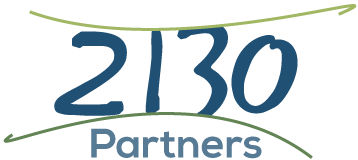 (This post is an edited version of an article by Suzanne Mayo Frindt. To get the complete text click here.)
Excellent companies have Financial Strategies, Operational Strategies, Marketing and Sales Strategies, and commensurate Resource Allocation Strategies (including People, Time, Money, Equipment/Assets, etc.) How many companies actually have a Cultural Strategy? Yet all companies have a culture, implicitly if not explicitly developed on a historical basis. A company culture can be defined as “a cognitive framework consisting of attitudes, values, behavioral norms, and expectations’’ (Greenberg and Baron, 1997), “the collective thoughts, habits, attitudes, feelings, and patterns of behavior’’ (Clemente and Greenspan, 1999), and “the pattern of arrangement, material or behavior which has been adopted by a society (corporation, group, or team) as the accepted way of solving problems’’ (Ahmed et al., 1999).[1]
(This post is an edited version of an article by Suzanne Mayo Frindt. To get the complete text click here.)
Excellent companies have Financial Strategies, Operational Strategies, Marketing and Sales Strategies, and commensurate Resource Allocation Strategies (including People, Time, Money, Equipment/Assets, etc.) How many companies actually have a Cultural Strategy? Yet all companies have a culture, implicitly if not explicitly developed on a historical basis. A company culture can be defined as “a cognitive framework consisting of attitudes, values, behavioral norms, and expectations’’ (Greenberg and Baron, 1997), “the collective thoughts, habits, attitudes, feelings, and patterns of behavior’’ (Clemente and Greenspan, 1999), and “the pattern of arrangement, material or behavior which has been adopted by a society (corporation, group, or team) as the accepted way of solving problems’’ (Ahmed et al., 1999).[1]
A company’s culture dramatically impacts the success or failure of all other strategies, and yet little if any attention is consciously placed on the care and feeding of a productive, learning culture. It is the invisible glue that binds together ever more diverse workforces including people from many cultures and generations. Most executives are not conscious of culture or of the implications of their decisions on the development of or degradation of culture. Without a culture strategy, where are they aiming anyway?
All development and training is built on the platform of culture. It is the ‘context’ that determines whether the financial, operational or marketing strategies succeed or fail. A human resource focus on recruiting, retention and succession planning by definition focuses on the experience and skill building of individuals and often misses the broader perspective of the cultural influence and implications. And whose job is it to develop a conscious strategy for culture? Whose job is it to continually feed and nurture a productive culture? We would say it lands squarely with Leadership!
What is a Learning Culture and How Does it Get Developed? A Learning Culture is one where the individuals and teams consciously invest in growing and developing themselves. In a Learning Culture executives are purposeful about the impact of decisions and strategies on the fabric of cultural development. There is a focus on reducing friction and waste in communications and developing productive working relationships. People know there is an expectation for growing and learning. Hiring decisions are made with an interest in an individual’s ability to learn, adapt, grow and shift. An atmosphere of curiosity, forward thinking and ‘how can we learn from this’ thinking permeates. It becomes the foundation or platform on which everything else is built.
What Are The Payoffs of a Learning Culture? For an organization, this type of culture provides much more innovation, creativity, agility, and expedited problem solving capabilities.
For individuals, it provides opportunities for learning and growth. It also provides forums to be challenged, to add value, and to contribute at a high level.
 How Can We Develop a Learning Culture?
There are many books and articles about learning organizations including work by Senge[2] and Argyris[3] that explain in depth about the what and how of learning organizations. Our 2130 methodology, (and terminology adaptation in some instances), ties to the 5 aspects of a learning organization that are generally accepted by leadership ‘gurus’ as follows:
How Can We Develop a Learning Culture?
There are many books and articles about learning organizations including work by Senge[2] and Argyris[3] that explain in depth about the what and how of learning organizations. Our 2130 methodology, (and terminology adaptation in some instances), ties to the 5 aspects of a learning organization that are generally accepted by leadership ‘gurus’ as follows:
- Systems Thinking: Understanding how things influence each other as a whole. Our view is that executives and organizational leadership are accountable to the entire organization and all stakeholders for this larger view, including strategy development, planning, implementation, review and adjustment. In addition to a responsibility for systems thinking on an individual executive basis it is also critical that the entire executive team itself operate as a productive, learning system.
- Shared Vision/Values: “A vehicle for building shared meaning” from Peter Senge’s “Fifth Discipline.” Unfortunately, this often looks more like the version from Dilbert “A long meaningless statement that proves management’s inability to focus.” Over the last 20+ years we have worked with organizations to develop Vision, Mission and Values in our methodology ‘Vision-Focused Leadership’. Absent a shared vision, individual agendas rule the day and gaining personal power becomes a major executive focus.
- Productive Mental Framework: We talk about busting mental barriers, increasing mental agility and increasing capacities to deal with the unrelenting pace of change and increased complexity of issues facing leadership today. It is critical to become aware of our blind spots and biases to be able to think clearly in the present to make the best decisions in a complex business environment.
- Personal Mastery: This is the commitment of every person in the organization to improve, develop and challenge themselves to be more than they are today. Individuals who insist on status quo and structural barriers to communication usually self-select out of a Learning Culture.
- Team Mastery: Organizations must realize that groups of people, (of any size of 2 or more), create yet another ‘entity’ with its own dynamics and productivity levels. There are group skills and developmental opportunities that build on, yet are distinct from individual capacities. When groups develop these capacities we call that increasing their collaborative capital.
So What Will You Do Now? Take stock of your culture. What are the stories being told about your organization by employees, clients and vendors? What stories would you like to be told? Where are the gaps? Are you willing to commit to your role in your organization’s culture?
[1] From “Developing a Corporate Culture as a Competitive Advantage”; Golnaz Sadri and Brian Lees
[2] Peter Michael Senge is an American scientist and director of the Center for Organizational Learning at the MIT Sloan School of Management. He is known as author of the book The Fifth Discipline: The art and practice of the learning organization from 1990 (new edition 2006). (Courtesy wikipedia.com)
[3] Chris Argyris is an American business theorist, Professor Emeritus at Harvard Business School, and a Thought Leader at Monitor Group.[1] He is commonly known for seminal work in the area of “Learning Organizations”. (Courtesy wikipedia.com)
